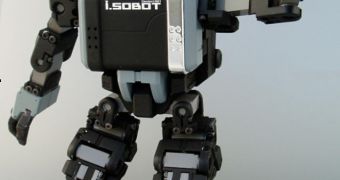In the hope of appealing to a less targeted segment of the market, the adults, a Japanese company presented the first humanoid robot designed to play and dance with its owners. This new entertainment tool is addressing the aging developed world and retired elders.
When it comes to humanoid robots, so far, Japan rules. They're a few generations ahead of most competitors in the field. Sony's AIBO was the first robot dog to recognize words and objects and Honda's ASIMO is the first humanoid robot that can walk on two feet in a manner resembling human locomotion at up to 6 km/h (3.7 mph).
The creators of the robot, Japan's toy giant Tomy, are doing a good job at mimicking human walk, with its two major aspects, the biomechanical design and movement control, performed by advanced software applications.
It may be only 16.5 centimeters (half a foot) tall, but the world's smallest humanoid robot "i-Sobot" is equipped with 17 micro actuators and a gyro-sensor to keep its balance and perform dancing, so it can make some 200 physical movements, including somersaults and other complex acrobatics.
Weighing only 350 grams, the robot can speak around 180 words and is able to respond to vocal commands coming from the owners, who the manufacturing company estimates to be in their 40s and above.
"As the number of children decreases, toy makers, if they want to maintain their market, have to reach out to adults and lift the barriers between toys and high-tech products," company official Kimi Watanabe told a news conference.
"There are lots of adults who dream of having a real robot but don't have the means, knowing it would cost them several hundred-thousand yen," or thousands of dollars, he said. For now, i-Sobot will only speak Japanese, and will cost around $250 (30,000 yen).
An English-speaking version will shortly follow, in the US, starting October 25 and the company hopes to reach a total of 300,000 units sold worlwide.

 14 DAY TRIAL //
14 DAY TRIAL //